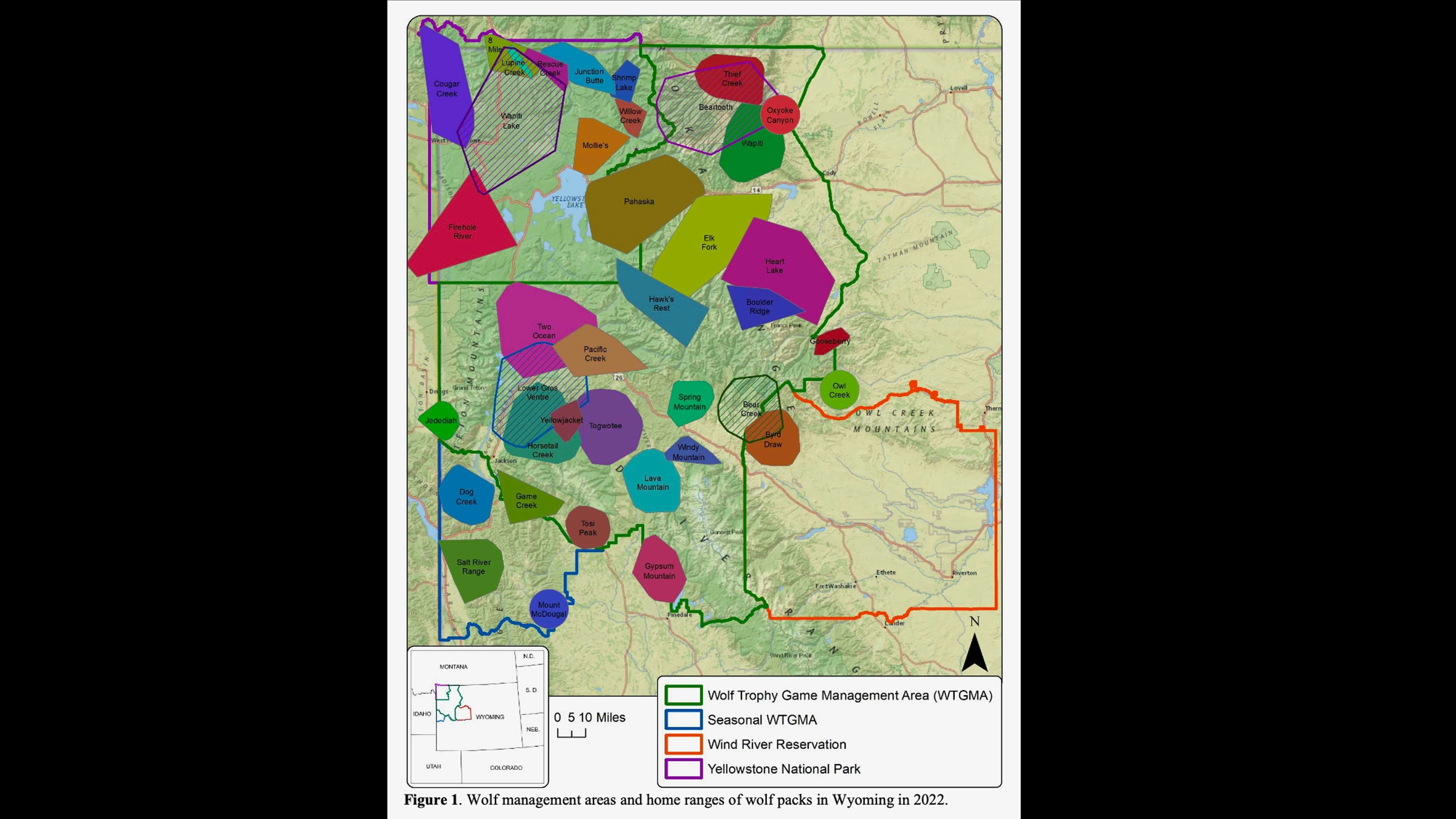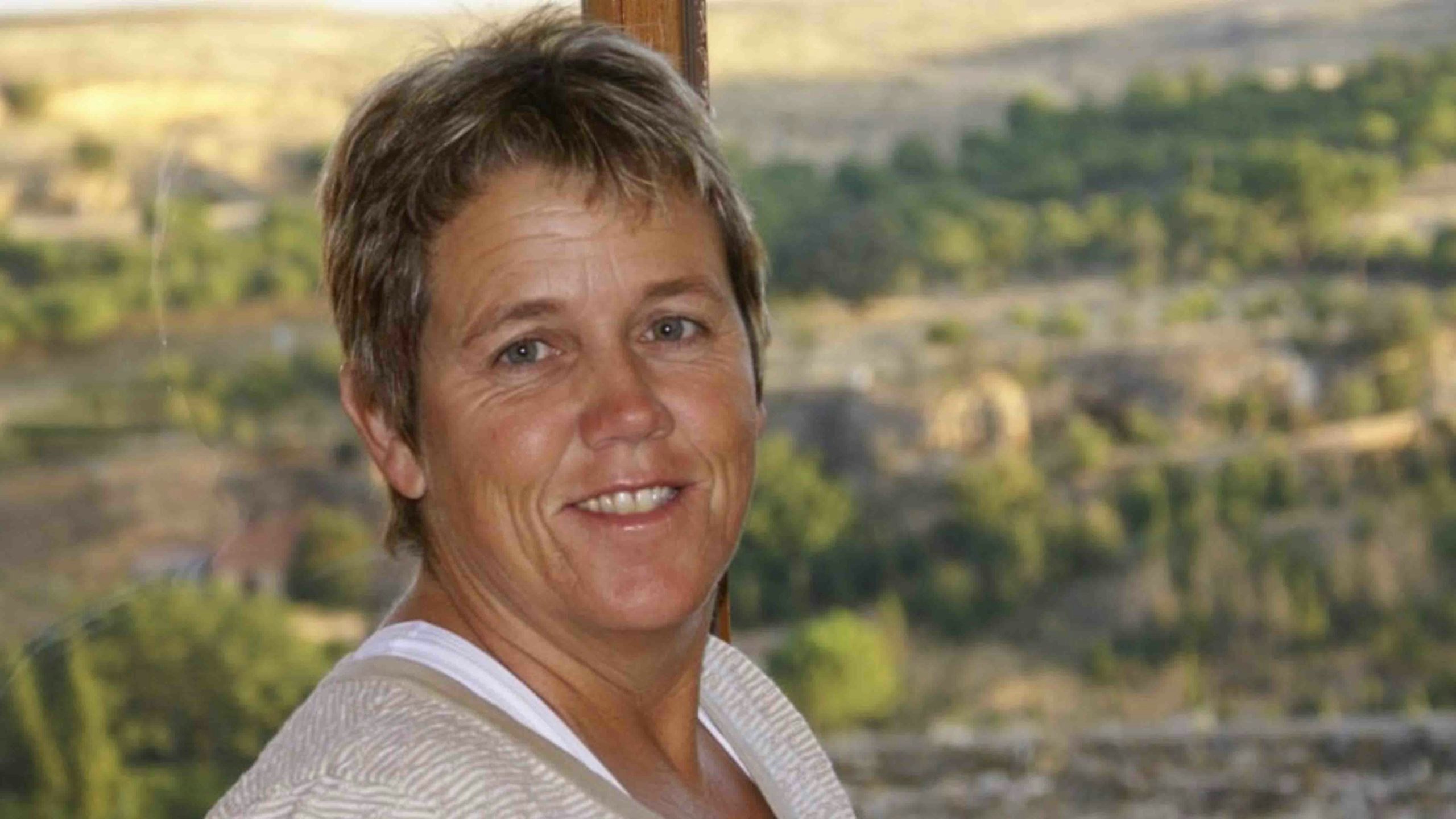Although wolf advocates have petitioned the U.S. Fish & Wildlife Service for a relisting of gray wolves in Wyoming and other states in the Northern Rockies, Wyoming’s wolf population exceeded federal recovery criteria for the species for the 21st consecutive year in 2022.
Wyoming had at least 338 wolves in 41 packs by the end of last year, according to the Wyoming Game & Fish Department’s annual wolf report. Of the total, at least 163 wolves were in the state’s trophy game area, 108 in Yellowstone National Park, 18 on the Wind River Reservation, and 49 wolves in the predator zone.
The report noted that there were 95 wolf mortalities in Wyoming last year including 53 in the trophy zone, 33 in the predator zone, 7 in Yellowstone, and 2 on the Reservation.
The Wyoming Game & Fish Department’s strategy to manage wolves within the trophy game area to stabilize the population at about 160 wolves in 2022 was effective, with this segment of the population tallying 163 at the end of the year.
The state wildlife agency has managed wolves in the trophy area since the species was removed from the list of federally protected species in early 2017, with the objective of maintaining a recovered wolf population while balancing the need to minimize wolf conflicts with livestock and maintain wild ungulate herds.

Yellowstone’s wolf count of 108 is an increase from the year prior when 97 were counted and the National Park Service was concerned about the number of wolves killed in wolf hunting seasons outside of the park. That year 25 wolves that inhabit the park part of the year were killed in hunting seasons outside the park in neighboring states.
In 2022, three of the national park’s packs produced multiple litters of pups, with the Junction Butte pack producing 21 pups from four litters.
This is the fourth time the Junction Butte pack has had four litters of pups born the same year (it also happened in 2018, 2019 and 2020), and the pack also had multiple litters prior to those 4-litter years.
This pack is the park’s largest, with 25 animals, but the average pack size in Yellowstone is 10.7 – substantially larger than packs outside the park.
Seven wolf mortalities were documented for Yellowstone in 2022, with four wolves killed by other wolves, one killed by a bear, one habituated wolf killed by a vehicle, and one that died of unknown natural causes.
The largest wolf packs outside of Yellowstone National Park include the 14-wolf Dog Creek pack located along the western state border with Idaho, and a similar-sized Hawk’s Rest pack in the Thorofare region of the Teton Wilderness southeast of the park. Pack size in the trophy game area of Wyoming averaged 6.8 wolves per pack.
Twice as many wolves were taken by hunters than wolves killed in control actions in response to livestock depredations in Wyoming’s trophy wolf area, where 31 mortalities were due to hunting, and 15 to control actions.
Three other wolf deaths were attributed to human causes, including one illegal kill (a case of mistaken identity which counted toward the wolf hunt mortality limit), one capture-related mortality (the wolf was killed by a mountain lion within a few days after capture), and one wounding loss during the hunting season.
Natural mortalities included two wolves killed by other wolves, one wolf that died in an avalanche, and one that died of other natural cause.
This year’s Wyoming wolf report includes an assessment of pack tenures in the trophy area.
The assessment examined the duration of each wolf pack’s persistence on the landscape, recording the data for 98 packs documented in the trophy zone from 1997 through 2022, and found that the average tenure of wolf packs increased through time and has remained high after the state began offering hunting seasons in 2017.
The relatively long tenure indicates that the Wyoming Game & Fish Department’s management “is resulting in a wolf population around the desired objective while allowing packs to maintain stable social structure that enables long-term persistence of packs on the landscape.”
The report reveals that at least 49 wolves in five packs reside in Wyoming’s predator zone. Last year, 33 wolf mortalities were documented, including 24 animals taken by the public as predatory animals, and six taken by USDA Wildlife Services in response to livestock depredations.
According to the report, three animals were taken illegally, including one failure-to-report as required by state statute, one trap-check violation, and one claimed self-defense during the open wolf hunting season in the seasonal trophy game area.

The Wind River Reservation has at least 18 wolves in three packs, and this population was subject to a hunting season last year, with one wolf being taken with a trap.
Wyoming wolves were confirmed to have killed or injured 97 head of livestock (46 cattle, 46 sheep and 5 horses) in 2022, for which WG&F provided $187,382 in total compensation to 23 livestock producers. Of the 29 wolf packs in the trophy zone, 11 packs (38%) were involved in at least one livestock conflict.
Six wolf packs were responsible for at least three confirmed conflicts with livestock. Where the conflicts occurred was evenly distributed, with half on public land and half on private land.
Agency expenditures for wolf management, damage control and depredation compensation in Wyoming in 2022 totaled $1.28 million, or about $3,811 per wolf.
Of that amount, the Wyoming Game & Fish Department spent about $538,000 while Yellowstone park spent $550,000. Other expenditures included $75,000 for efforts in the predator zone, $121,000 in Grand Teton National Park, and about $4,000 on the Wind River Reservation.
Cat Urbigkit is an author and rancher who lives on the range in Sublette County, Wyoming. Her column, Range Writing, appears weekly in Cowboy State Daily.





